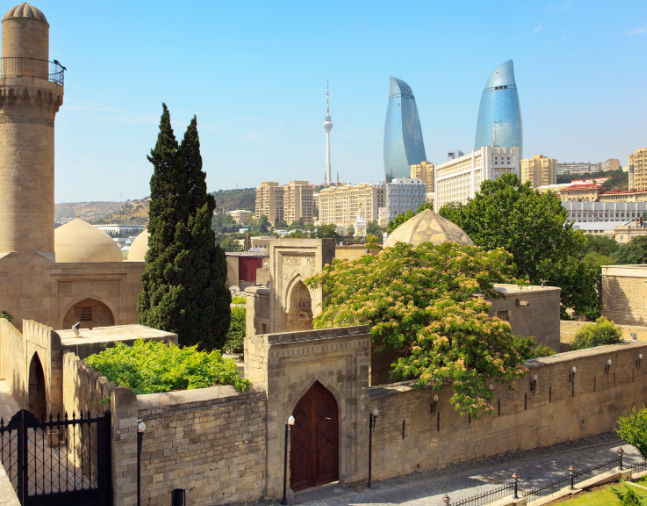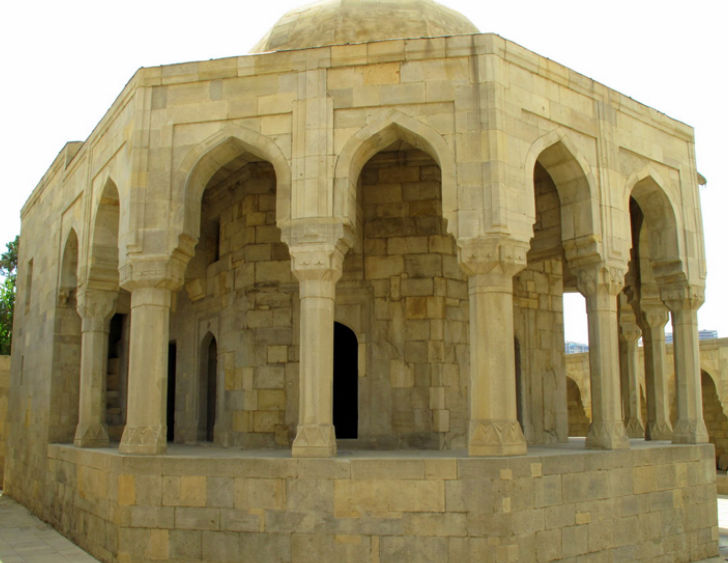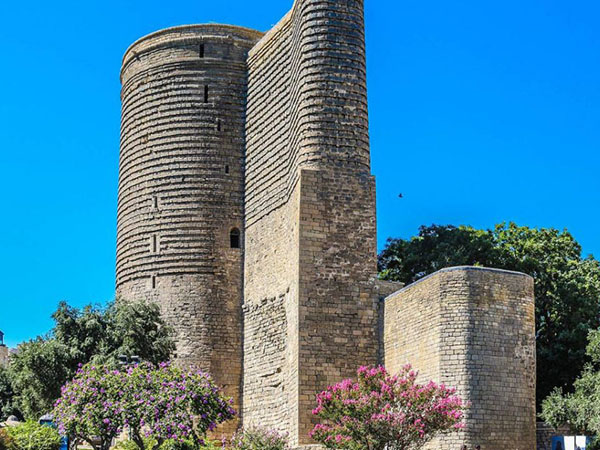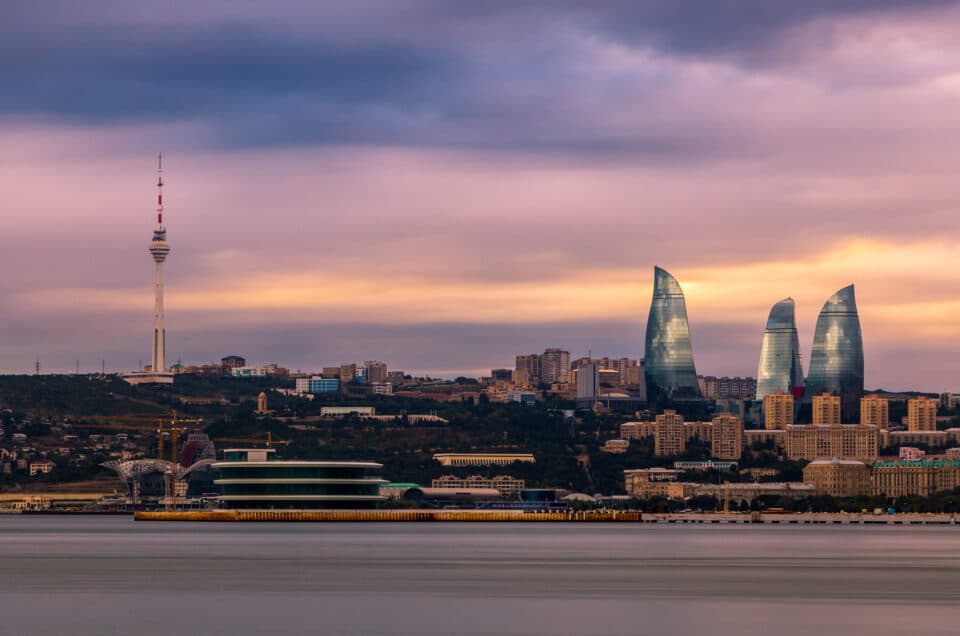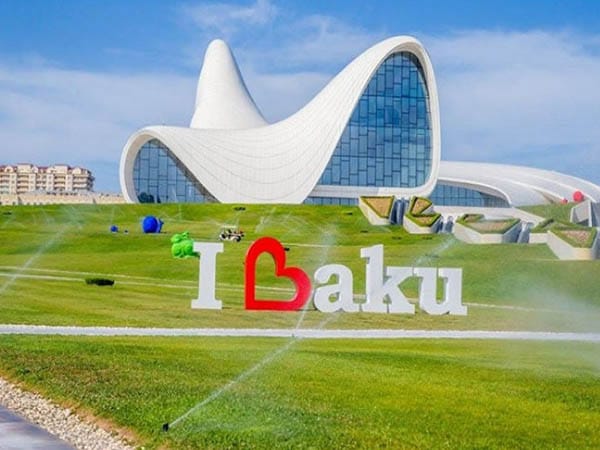The Shirvanshahs Palace is one of the oldest and most fascinating monuments of Azerbaijan architecture, which belongs to the rulers of Shirvan, is located on the shores of the Caspian Sea in Baku. Has long been palace ensemble attracted the attention of researchers throughout the country, it is because there was no such famous monument, which was occupied by so many scientists. The palace with all its incoming buildings occupies a reasonably large space, but the building is a two-story structure, quite simple in architectural design. Therefore, scientists suggest that this is the very first building of the architectural ensemble. Shirvanshah Palace is the pearl of the architectural heritage of Azerbaijan located in the heart of Baku. Amazingly beautiful complex beside the palace includes Divan Khan courtyard, tomb, the mosque of 1441, as well as the bathrooms and mausoleum of court scholar Seyid Yahya Bakuvi.
Most of the rooms have unusual shapes and designs. Thus, the hall has an octahedral shape near the Divan-Khan building, the mausoleum has the same shape, the tomb is rectangular, the prayer hall is a cross-shaped building, and a beautiful minaret adorns the mosque.
The palace complex was built not during one decade, continually getting more prominent with new buildings from about the 13th to the 16th century. However, despite such a large time variation, the ensemble of the palace of the Shirvanshahs makes a strikingly complete artistic impress. And all thanks to the delicacy and attentiveness of each of the next generation of architects: you can see how accurately observed cubic and multi-faceted architectural volumes, constantly traced a carved stone pattern, rhythm, and proportionality of architectural forms. This is truly a masterpiece in stone.
Absheron limestone served as the material for building the palace. A feature of this material is its color. After hewing, the stones from the Apsheron limestone become milky white, but over the years they acquire a unique ocher-golden color.
Masters laid out the walls with stones of various sizes, and they so carefully and skillfully hewed every stone that after a century the seams disappeared by themselves. Also, the peculiarity of the building was laid out the walls alternately narrow and wide stones. Such refinement in laying stone gave a special pattern to the whole building. In some places, the limestone was laid horizontal, and in some areas – vertical layers. As a result, some stones look brighter, while others look darker.
The palace complex is located in the upper part of Baku hill, in the old part of the city, surrounded by the old fortress walls. The oldest part of the palace, built for several centuries, was not an eight, but an octagonal hall on the 2nd floor of the late 14th century. Generally, according to its design, the palace is a rather complicated figure. For example, some of the western, northern, and eastern facades are a missing rectangle; On the southern front, there are two triangular lanterns and a broken line between them. It’s hard to imagine in words, but in appearance, the building makes a grand impression.
Today the palace has three narrow spiral staircases and an octagonal main hall with 52 rooms. Archaeological excavations include household goods, coins from the 12th and 15th centuries, copper items of the 19th century, weapons and ornaments, and musical instruments of the 15th century. The outstanding feature of the collection is Shamakhi rugs.
The history of Shirvanshahs Palace
The Shirvanshahs Palace was built in the 15th century and experienced many historical events. Until the mid-15th century, Baku was ruled by the Safavids, but in 1578 the palace passed into the possession of the Turks. In 1723, Baku, and with it the palace, were captured by the troops of Peter I. As a result, the southern and eastern facades of the building were damaged.
Since then, the building has not been restored, and until the 19th century, it was almost in a ruined state. But, in 1857, the Palace of Shirvanshahs was transferred to the administration of the Russian military department. The building was repaired, but since it was supposed to store military equipment and weapons, it was not only restored but also rebuilt. As a result, the building received severe damage to the historical heritage of the entire Azerbaijani people.
After the revolution of 1917, Soviet power was established, soon creating a special Commission for the Protection of Monuments of Culture. And since 1932, the restoration of the medieval creation of Azerbaijan began. In 1964, the palace of the Shirvanshahs was given the status of a museum-reserve. Despite the fact of plundering and devastation in the 16th century, tourists from all over the world come here to visit the main Baku attraction.
Khan’s sofa
The palace keeps a lot of secrets. These include Divan Khan. No one can guess what this building is for, and only some scientists assume that this place is a judgment seat. The basis of such conclusions was the inscription – a quotation from the Quran, located above one of the entrances to the halls.
With a small opening, you can enter the enclosed courtyard of the Divan Han, which is a lodge in the middle of a high stylobate in the middle of an 8-sided tie. There are several versions of the appointment of the Divan Inn (late 15th century). Perhaps there was legal action here, the Council of State, emergency rooms or mausoleum.
You can see that cubic and versatile architectural volumes follow a carved pattern on the proportions of stone, rhythm, and architectural forms. The Shirvanshahs Palace is truly a stone masterpiece.
On the palace grounds, there is a sacred and miraculous place – Syd-kuyusi (from the local dialect translates as Milk Well). It is believed that water from the well can return milk to a nursing woman.
Shrine
The tomb of the Shirvanshahs is often called the “Tomb” and directly opposite the palace entrance. The gloriously decorated portal towers proudly from the top. Excavations in the tomb, as well as tombstones, graves of many members of the Halilullah family, were found. A total of 14 codes were found with the remains of Habibullah’s son and mother, Halilullah.
Palace Bath
The palace bath, which was discovered in 1939, was no less attractive. The bathroom consisted of 26 rooms covered with domes; each of them had windows for the necessary consecration. The full bath is divided into two main rooms, and pylon partitions already separated them into small rooms.
The outer rooms (from the local dialect, “chel”) were used as changing rooms and were heated with warm air coming from the inner rooms (“ichery”). The latter was intended for swimming; they were tanks with hot and cold water. The bath was heated with hardened oil; steam was supplied through steam channels that are located under the floors. Bath only half rose above the ground level, which helped keep the heat in the cold season and keep cool on a hot day.
A beautiful panorama of the palace of the Shirvanshahs opens from the sea, from where it can be seen that the palace is located on three steps that seem to descend from the hill.You may also want to take Old City Baku Tour .
Then the Palace of the Shirvanshahs was listed as a UNESCO World Heritage Site.
Its territory is impossible to see empty, and there are guided tours, educational and educational lectures, exhibitions, historical, musical, entertainment events. The history of Azerbaijan revives daily among the walls of the palace for everyone who wants to plunge into it.
